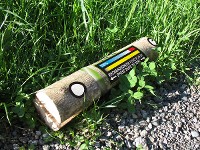recharge.green – balancing Alpine energy and nature
Overview
The Alps have great potential for the use of renewable energy. Thereby they can make a valuable contribution to mitigating climate change. This, however, means increasing pressures on nature. What could be the impact of such changes on the habitats of animals and plants? How do they affect land use and soil quality? How much renewable energy can reasonably be used? The recharge.green project brings together 16 partners to develop strategies and tools for decision-making on such issues. The analysis and comparison of the costs and benefits of renewable energy, ecosystem services, and potential trade-offs is a key component in this process.
Aims and Activities
The 16 project partners will be developing strategies and tools to show that it is possible to use renewable energies in the Alpine region and at the same time ensure sustainable land use, thus helping preserve the rich biodiversity and the soils of the Alps.
Their activities are subdivided into work packages with the following aims:
- Information and Publicity: making available means of communication to the partners; making stakeholders, politicians, NGOs and young people aware of the developments and results of the project;
- Potentials and Conflicts: producing scenarios to highlight the potential of renewable energies in the Alps as well as presenting the possible conflicts between nature and humans arising from the use of renewable resources;
- Economic Dimension: producing models as a basis for decision-making drawing on the insights of the previous work package;
- Testing and Implementation: testing the models and tools developed in pilot areas; determining whether the results can be transferred to other Alpine regions;
- Dissemination: publicizing the results at events; presenting a transnational handbook for politicians and decision-makers on realizing the proposed solutions.
The project consortium combines participants from all relevant areas for the production of renewable energies and of sustainable land use. This is fundamental in order to harmonize the fields of energy production, land use and species protection.
The results of recharge.green will support the implementation of various EU directives and strategies as well as contribute to the implementation of the Alpine Convention.
Projects Results
| Downloads | |
| Energy & nature in the Alps: a balancing act. | Perpetual calendar This perpetual calendar explains the main project findings, in particular to decision-makers from local to Alps-wide level. It takes readers through the decision-making process that the fictional town of “Alpine Vale” goes through when discussing the potential use of renewable energy. |
| Decision support system | Prototype, information available only at an alpine level, will be updated shortly (-> Tools -> Alpine Area r.green). With the help of the online platform “JECAMI”, users can visualise different renewable energy scenarios at both the Alpine and pilot study levels. The system calculates the maximum energy production at the lowest costs and displays the optimal locations for renewable energy production at the desired scale. |
Report: Activities in pilot areas – testing and implementation. | |
| Report: Renewable Energy and Ecosystem Services in the Alps – status quo and trade-off between renewable energy expansion and ecosystem services valorization. | |
| Report: Sustainable Renewable Energy Planning in the Alps – a handbook for experts and decision makers. | |
| Modeling and visualization of optimal locations for renewable energy production in the Alpine Space with a special focus on selected pilot areas. | |
| Report: Recommendations and lessons learned for a renewable energy strategy in the Alps. | |
| Report about round tables for the Piedmont pilot area. | The report summarizes the main aspects of the discussion between local stakeholders in round tables concerning hydroelectric and forest biomass energy in Gesso and Vermenagna valleys (Valdieri – 31st March 2015). |
| Report about round tables for the pilot areas Mis and Maè Valley | This report summarises the activities (methodology and results) with stakeholders carried out by Veneto Region in the pilot areas in the Belluno Province. |
IIASA Research
Researchers from IIASA's Ecosystem Services and Management (ESM) program are in charge of the economic-ecological modelling. In recharge.green IIASA’s central model is the BeWhere model, used to determine optimal renewable energy deployment geographically explicit while explicitly considering trade-offs with other ecosystem services such as biodiversity.
CONTACT DETAILS
Research Group Leader and Principal Research Scholar Agriculture, Forestry, and Ecosystem Services Research Group - Biodiversity and Natural Resources Program
Senior Research Scholar Agriculture, Forestry, and Ecosystem Services Research Group - Biodiversity and Natural Resources Program
ON THE BLOG
What’s a forest worth? First results from IIASA in the recharge.green project.
Final Conference Press Release
Timeframe
10.2012 - 06.2015
EVENTS
IIASA at the European Forum Alpbach 2015 and Alpbach-Laxenburg Group Retreat
30 Aug 2015 - 01 Sep 2015
International final conference of the Recharge.Green project
20 May 2015 - 21 May 2015
IUFRO World Congress: Sustaining Forests, Sustaining People: The Role of Research
05 Oct 2014 - 11 Oct 2014
International conference on balancing renewable energy and nature in the Alps
12 Nov 2013 - 13 Nov 2013
RechargeGreen on Twitter
Tweets by @RechargeGreen

